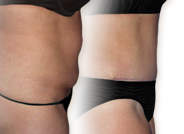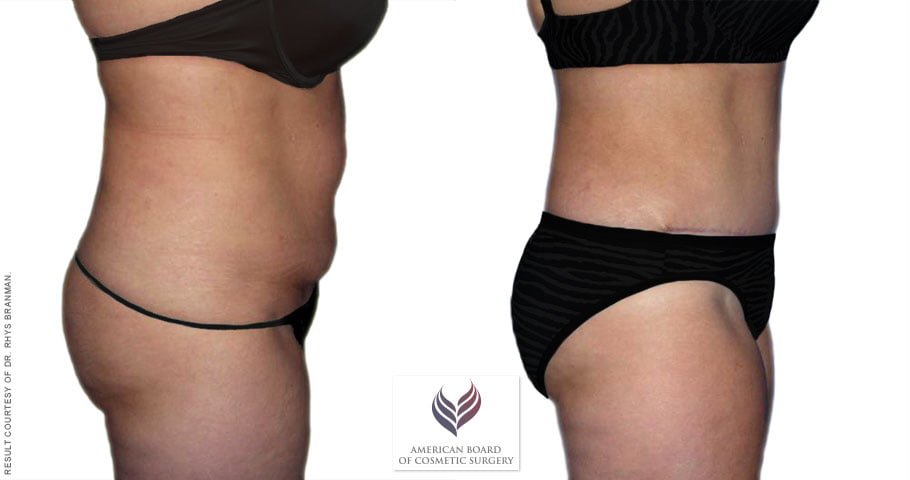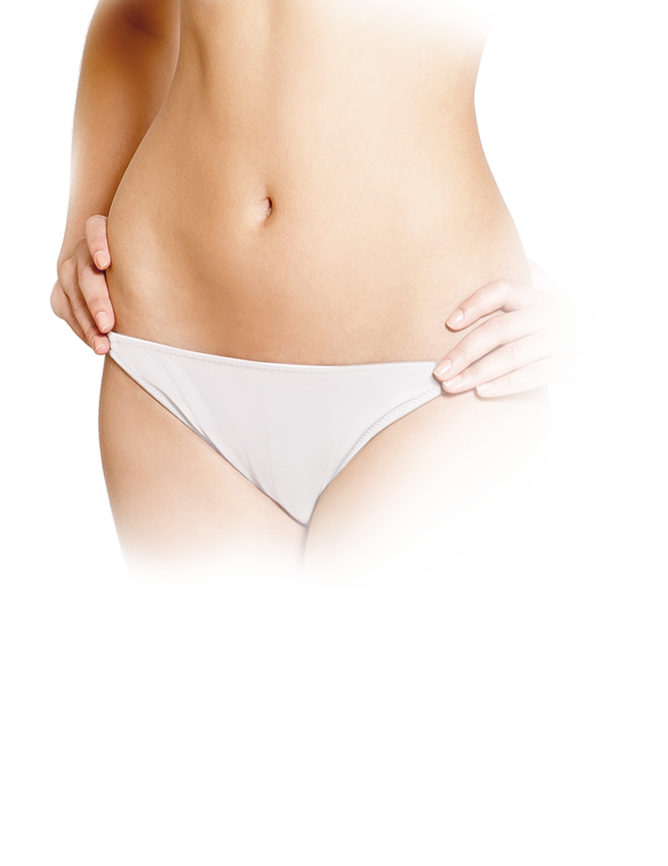What is a Tummy Tuck?
A tummy tuck is a surgical body contouring procedure which tightens and reshapes the abdominal area, helping to achieve a more aesthetically pleasing, slimmer overall appearance. Having a flatter, firmer midsection can dramatically improve the way clothing fits and looks, helping you feel more confident and comfortable in your body.
During the surgery, the abdominal muscles are tightened and excess, sagging skin is eliminated, correcting a protruding belly and leaving the midsection flatter and better toned. Tummy tucks are a popular procedure for men and women, particularly those whose bodies have undergone dramatic changes from weight loss or pregnancy.
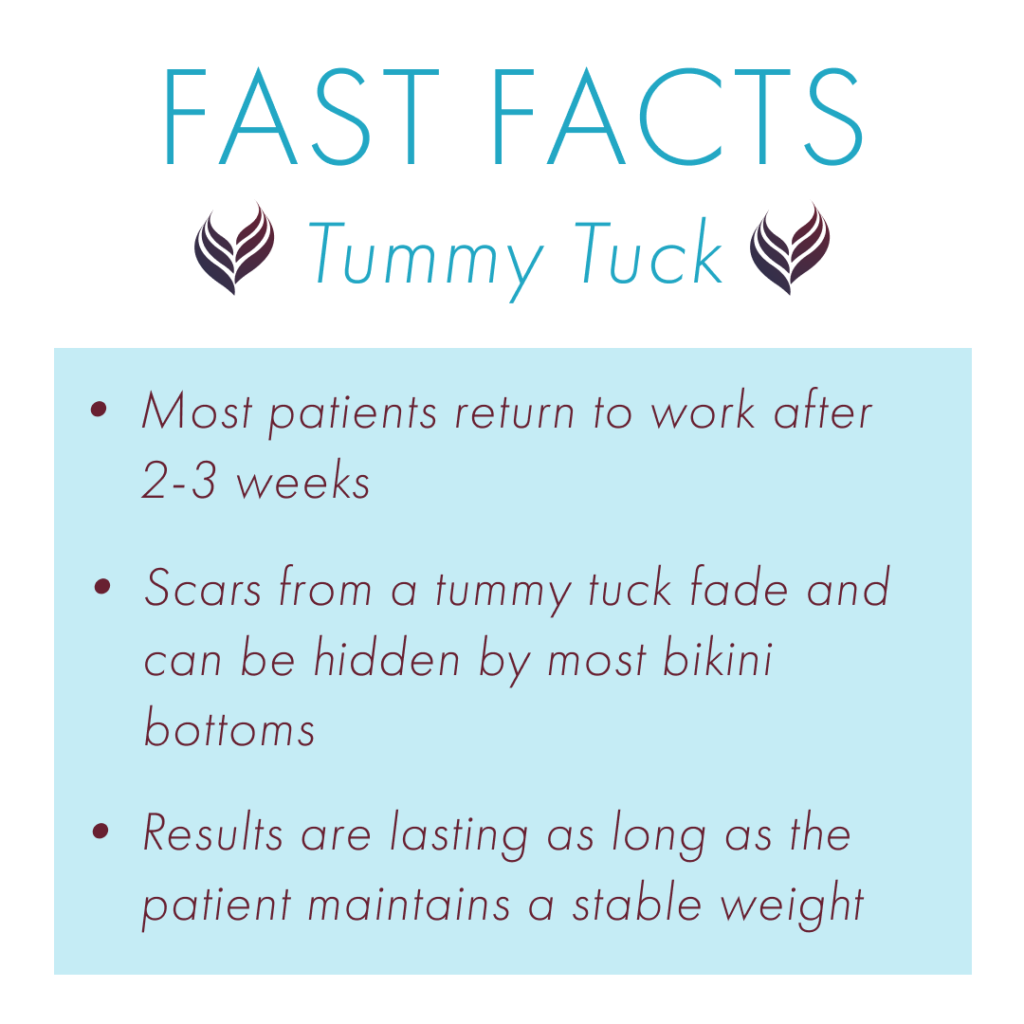
Who Might Benefit from Abdominoplasty?
The decision to have any cosmetic procedure is personal, and patients choose to have tummy tucks for a variety of reasons. The best candidates for this surgery are at or near their ideal body weight, are non-smokers in good health, and have realistic expectations about what surgery can achieve for them.
The best candidates are at a stable weight & in good health
If any of the following describe you, a tummy tuck is an option to consider:
- Diet & exercise have helped with weight loss, but your abdomen still protrudes and lacks tone.
- Your abdominal muscles and skin are stretched and sagging following pregnancy.
- After significant weight loss, you now have loose, excess skin hanging around your belly.
- You have always had a belly that “sticks out,” even though you are healthy and in very good shape.
- You are a non-smoker and are in good health.
The surgery can help patients in any of these situations address what they don’t like about their shape and achieve a firmer, flatter abdomen.
How to Choose a Cosmetic Surgeon
When considering abdominoplasty, the single most important choice you will make is deciding on a cosmetic surgeon to perform your procedure. Abdominoplasty requires specialized training, experience, and utmost care to ensure a safe and successful outcome. When you make an appointment to consult one-on-one with a potential cosmetic surgeon, make sure you ask how many tummy tucks he or she has performed and about how frequently the surgeon performs this procedure.
» SEARCH FOR AN ABCS COSMETIC SURGEONAlways confirm a cosmetic surgeon’s training and board certification. Choosing a board certified cosmetic surgeon ensures that the person performing your procedure has had formal training in tummy tuck cosmetic surgery and that your procedure will be performed in a fully accredited surgical facility. Learn why this is important »
Finally, look at before and after photos, paying special attention to the results of patients whose bodies look similar to yours before surgery—this will help you get an idea for that surgeon’s aesthetic sensibility.
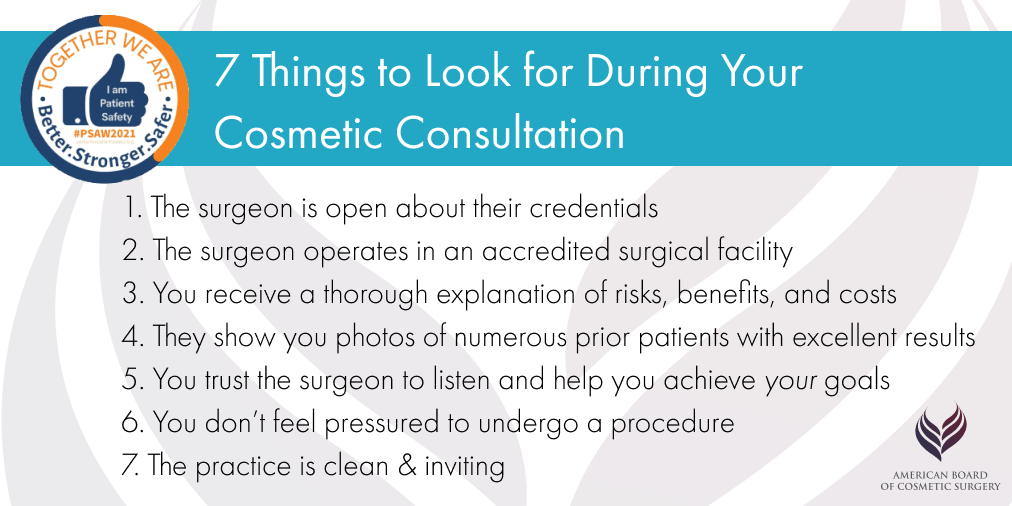
Types of Tummy Tucks
No two abdominoplasty patients start with identical concerns, nor will any two patients share the exact same goals. Your cosmetic surgeon will recommend the type of tummy tuck that will achieve your desired outcome and create natural-appearing results with the least scarring possible.
Mini-Tummy Tuck: Less Extensive & Improves the Lower Belly
Are you mainly bothered by a “pooch” or loose skin and stretch marks below the belly button? A mini-tummy tuck may be a good option for you. This technique involves a single incision made just above the pubic mound, through which your cosmetic surgeon will tighten loose muscles (flattening the “pooch”) and remove excess skin to restore a smooth, flat abdominal wall.
The resulting scar from a mini-tummy tuck is a thin, horizontal line that is typically just a few inches long. Benefits include a shorter, less involved procedure, a quicker recovery, and a flatter, slimmer lower abdomen that looks better in swimsuits and fitted clothing.
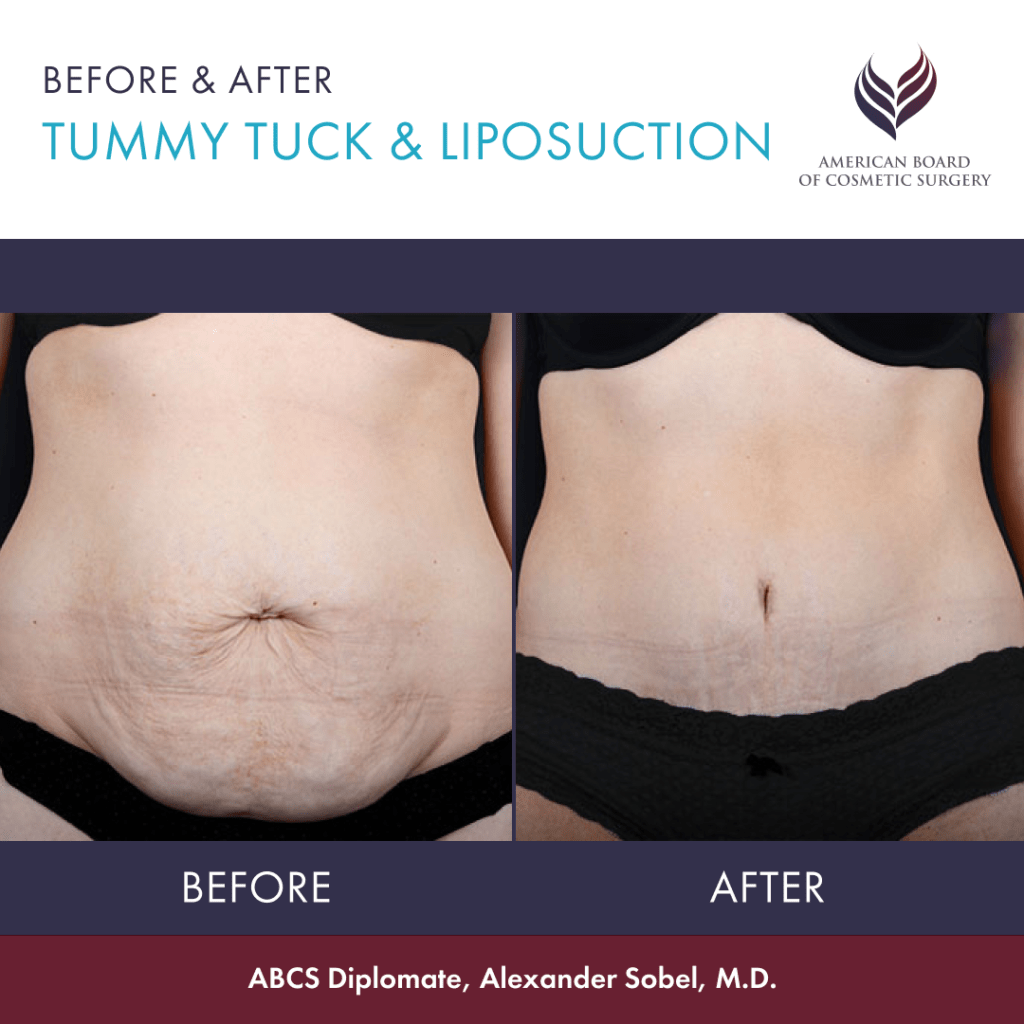
Classic or “Full” Tummy Tuck: Improves the Upper & Lower Abdomen
Are you bothered by roundness and/or excess skin folds above and below your belly button? A full tummy tuck, which addresses the full length of the abdominal wall, may yield the best results. Through a horizontal or U-shaped incision, made in the skin above the pubic mound, your cosmetic surgeon will remove excess skin and tighten the abdominal muscles. In some cases, a second incision is made in the skin around the navel to address excess skin above the belly button and achieve the most natural looking results.
The resulting scar from a full tummy tuck looks similar to that for a mini-tummy tuck, but will typically be longer, running from hip bone to hip bone. Even so, a full tummy tuck scar can usually be hidden beneath a swimsuit bottom. Benefits of a full tummy tuck include a much flatter, smoother abdomen, reduced appearance of stretch marks, and enhanced comfort in pants and skirts. You will also find that form-fitting dresses and swimsuits have a more flattering fit.
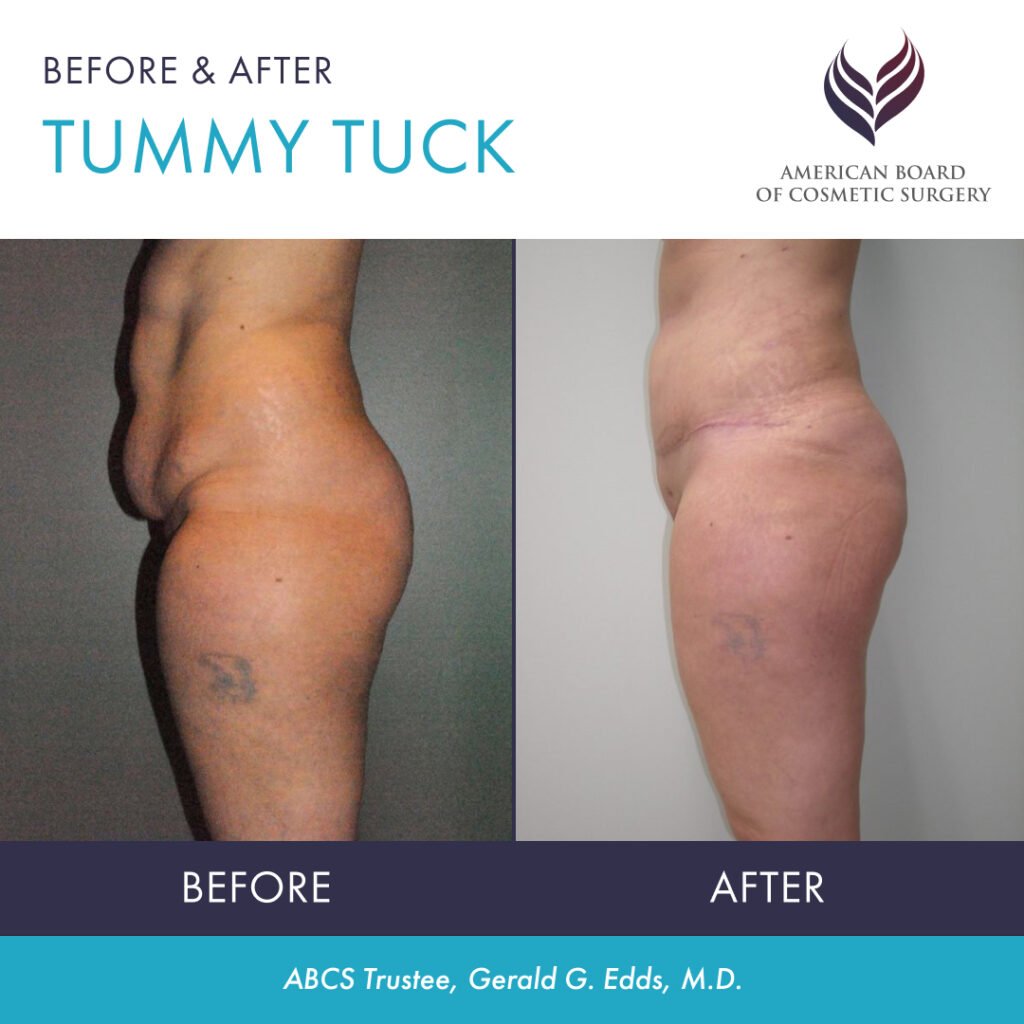
Extended Tummy Tuck: Improves the Upper & Lower Abdomen and Flanks
Have you lost a lot of weight and now have excess, sagging skin hanging around the front half of your body? Or, have you noticed significant laxity in your skin or abdominal muscles following multiple pregnancies? An extended tummy tuck may be the best option to address your concerns. Although it involves a longer incision, an extended tummy tuck removes excess, hanging skin from the front (upper and lower abdomen) and the flanks, as well as tightens the abdominal wall.
The resulting scar from an extended tummy tuck can often be hidden by clothing, including many swimsuits, but it may not be entirely covered for some patients. Even so, many patients consider some visible scarring a worthwhile price for a much improved body shape.
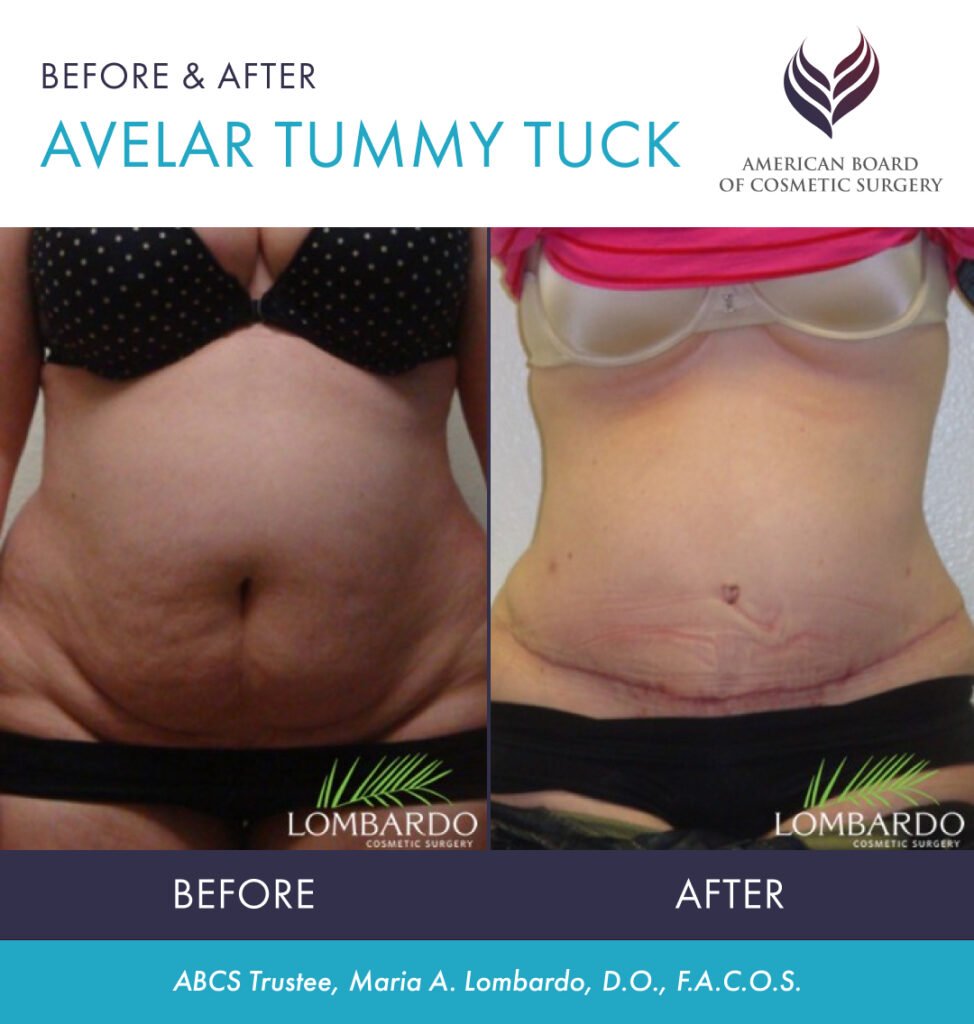
- Key Benefits
- Glossary
- Tightens abdominal muscles: Tummy tuck surgery can tighten the abdominal muscles that have become stretched or weakened, creating a flatter, more toned appearance. This can be particularly beneficial after pregnancy or significant weight loss.
- Removes excess skin: In addition to tightening the muscles, tummy tuck surgery can also remove excess skin and fat from the abdomen, creating a more streamlined appearance.
- Improves abdominal contour: By tightening the muscles and removing excess skin and fat, tummy tuck surgery can improve the overall contour and shape of the abdomen.
- Abdominoplasty: A surgical procedure commonly known as a tummy tuck, which involves removing excess skin and fat from the abdomen and tightening the abdominal muscles for a flatter and more toned appearance.
- Mommy makeover: A combination of surgical procedures, typically including a tummy tuck, breast augmentation or lift, and liposuction, aimed at restoring a woman’s pre-pregnancy body.
- Liposuction: A surgical procedure that removes excess fat deposits from specific areas of the body using suction.
- Abdomen: The region of the body between the chest and the pelvis, commonly referred to as the stomach area.
- Fascia: The connective tissue that surrounds and separates muscles and other internal structures in the body.
- Diastasis recti: A separation of the abdominal muscles, particularly the rectus abdominis muscles, often occurring as a result of pregnancy or significant weight gain.
- Excision: The surgical removal of tissue, such as excess skin or fat, through incisions.
- General anesthesia: A state of controlled unconsciousness induced by medications to eliminate pain during surgery.
- Local anesthesia: Administration of medication to numb a specific area of the body, typically used for minor procedures and surgeries.
- Intravenous sedation: The use of medications delivered through an intravenous line to induce relaxation and drowsiness during a surgical procedure.
- Hematoma: A collection of blood that forms outside of blood vessels, often resulting from injury or surgery.
- Stretch marks: Scarring that appears in bands of parallel lines or streaks that appear on the skin due to rapid stretching or growth, commonly seen after pregnancy or significant weight gain or loss.
Life After Abdominoplasty
The majority of tummy tucks can be performed as outpatient procedures, and patients go home a few hours after surgery. However, your cosmetic surgeon may require an overnight hospital stay after a more extensive abdominoplasty so you can be safely monitored during the initial hours of your recovery. Because a tummy tuck involves surgery on the abdominal muscles, recovery after abdominoplasty takes more time than that for other procedures.
Expect to be sore and somewhat uncomfortable for the first week or so and spend the first few days resting quietly at home, although you will be encouraged to get up and walk around the house to maintain healthy circulation. It is not uncommon for patients to have drains temporarily placed in the incisions to help remove fluid after surgery. If this is the case for you, your cosmetic surgeon will give you detailed instructions for keeping the area clean and well-maintained until drain removal a few days following surgery.
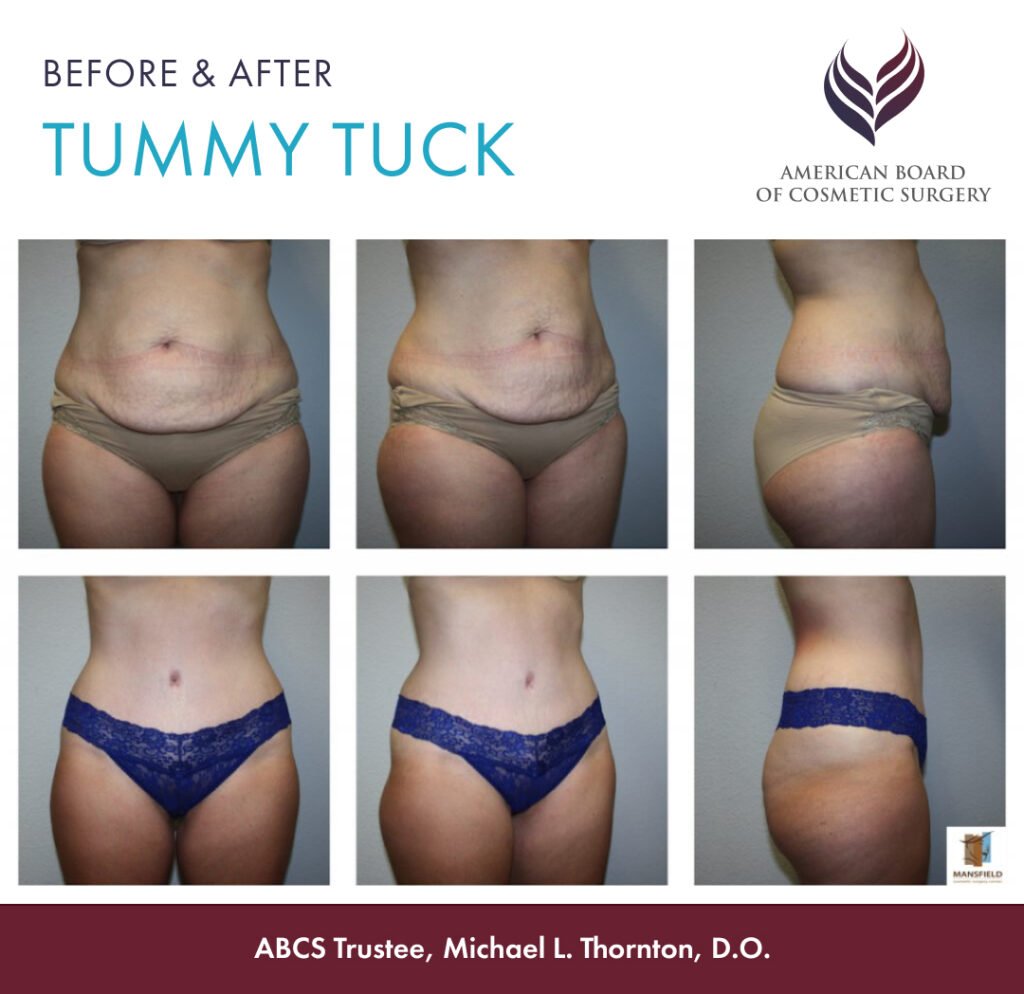
When Can I Return to Work?
Depending on how physically demanding your job is, you may be ready to return to work after 2 to 4 weeks. If you have a desk job, you should be able to go back to work on the early side of this time frame, but if your job involves lifting, straining or other strenuous activities, expect to take up to a month away from such tasks.
How Can I Take Care of My Kids?
Tummy tuck surgery is especially popular with moms post-pregnancy, and childcare is a common concern. Because of the limits placed on lifting and straining, you will need to have full-time help with small children for the first few weeks after a surgery. Lifting even a 25 pound child too soon after a tummy tuck can jeopardize your results by stretching the incision site and possibly leading to prolonged bleeding and swelling. Follow your cosmetic surgeon’s instructions carefully and completely.
If your children are a little older, you should be able to resume many of your parenting duties, such as driving, cooking, and shopping, after the first 2 or 3 weeks following abdominoplasty. Just make sure you have plenty of help carrying groceries, feeding the pets, and doing other more active tasks while you recover from the surgery.
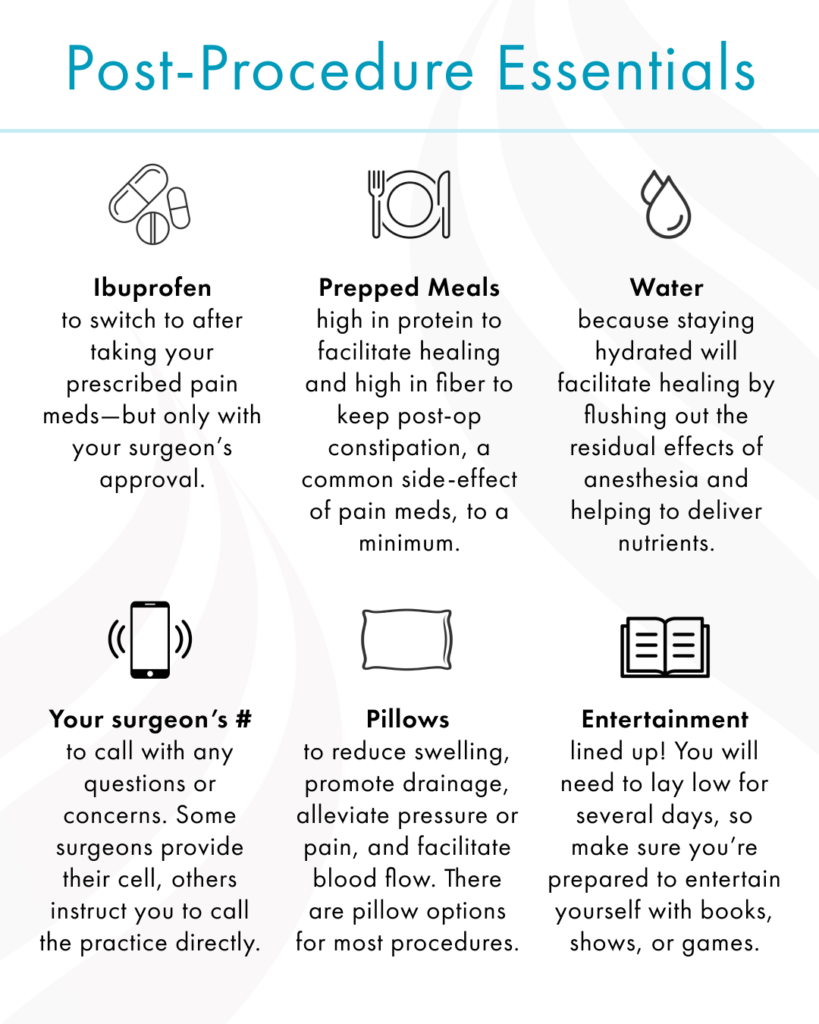
Keeping Your Results Looking Their Best
The improvements made during a tummy tuck are meant to last—following the surgery, abdominal muscles will remain firmer and tighter and the excess skin will not return. However, future pregnancies or weight gain can negatively affect your surgery results, causing the muscles or skin to stretch back out and become lax after returning to your normal weight. If you’re planning to have more children or you are still working on reaching your goal weight, it’s best to wait until you have achieved these milestones before having a tummy tuck.
When performed by a qualified cosmetic surgeon, abdominoplasty is a surgery that can be a life-changing procedure, helping you enjoy a slimmer, more youthful body that looks and feels better every day. The best way to learn more is to meet with a board certified cosmetic surgeon for a consultation. You can find cosmetic surgeons in your area by using our ABCS Find-a-Surgeon tool.
References »
Shermak MA. Abdominoplasty with Combined Surgery. Clinics in Plastic Surgery. 2020 Jul;47(3):365-377. doi: 10.1016/j.cps.2020.02.001.
Pollock TA, Pollock H. Progressive tension sutures in abdominoplasty: a review of 597 consecutive cases. Aesthetic Surgery Journal. 2012 Aug;32(6):729-42. doi: 10.1177/1090820X12452294.
Luis H. Macias, Edwin Kwon, Daniel J. Gould, Michelle A. Spring, W. Grant Stevens, Decrease in Seroma Rate After Adopting Progressive Tension Sutures Without Drains: A Single Surgery Center Experience of 451 Abdominoplasties Over 7 Years, Aesthetic Surgery Journal, Volume 36, Issue 9, October 2016, Pages 1029–1035, https://doi.org/10.1093/asj/sjw040
